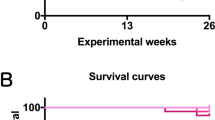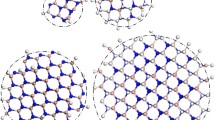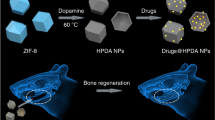Abstract
Napoleon Bonaparte died in exile on the island of St Helena in 1821 at the age of 51. An autopsy by his physician, Autommarchi, in the presence of Sir Thomas Reade, some staff officers and eight medical men revealed a cancerous growth of his stomach1. But mainly on the basis of high levels of arsenic detected in several samples of his hair2 it has been suggested, most recently by Hapgood and Weider3, that Napoleon was poisoned by arsenic. We have analysed a different sample of Napoleon's hair and find an almost normal arsenic content but elevated antimony.
This is a preview of subscription content, access via your institution
Access options
Subscribe to this journal
Receive 51 print issues and online access
199,00 € per year
only 3,90 € per issue
Buy this article
- Purchase on SpringerLink
- Instant access to full article PDF
Prices may be subject to local taxes which are calculated during checkout
Similar content being viewed by others
References
De Bourienne, L. A. F. Mem. Napoleon Bonaparte Vol 4, 427–428 (Grolier Society, London, 1885).
Smith, H., Forshufvud, S. & Wassen, A. Nature 194, 725–726 (1962).
Weider, B. & Hapgood, D. The Murder of Napoleon (Methuen, New York, 1982).
Smith, H. Analyt. Chem. 31, 1361–1363 (1959).
Takeuchi, T. et al. Radioanalyt. Chem. 70, 29–55 (1982).
Author information
Authors and Affiliations
Rights and permissions
About this article
Cite this article
Lewin, P., Hancock, R. & Voynovich, P. Napoleon Bonaparte—no evidence of chronic arsenic poisoning. Nature 299, 627–628 (1982). https://doi.org/10.1038/299627a0
Received:
Accepted:
Issue Date:
DOI: https://doi.org/10.1038/299627a0
This article is cited by
-
On the use and usefulness of SLOWPOKE-Toronto
Journal of Radioanalytical and Nuclear Chemistry Articles (1994)
-
Arsenic in Napoleon's wallpaper
Nature (1982)
-
Napoleon's health
Nature (1982)



